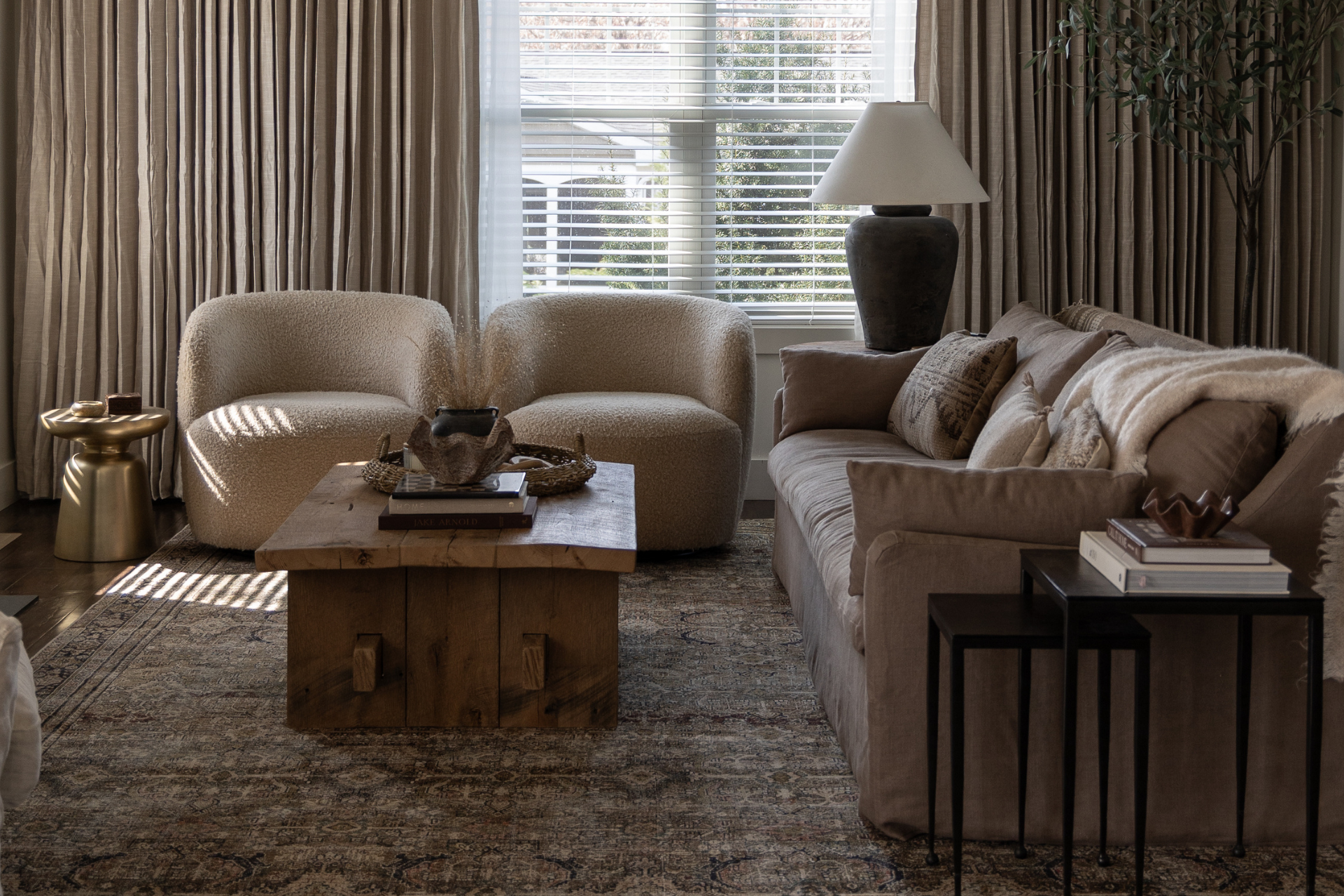If you checked out part 1 of my vanity build then you’re here for part 2, the concrete countertop. I’ve wanted to try concrete countertops for some time now and this was the perfect opportunity. It’s a good idea to start small, before jumping into an entire kitchen project.
THE PLANS
My overall vanity base is 28” wide by 20” deep. I plan to have my countertop overhang by 1” on all sides, so my overall countertop size will be 30” wide by 22” deep. Here is a top view showing the dimensions.

The sink knockout area will vary depending on what sink you use. You may even need to factor in faucet knockouts depending on your plans. Just be sure to follow the template that is included with your sink. I am using the Kohler Vox Rectangular Vessel Sink for this project. I did not need to include any faucet knockouts since the faucet attaches directly to the sink itself.
BUILDING THE MOLD
The entire mold will be built out of 3/4” melamine boards. On a large piece of melamine, I started by marking the overall countertop dimension with a marker (30” wide by 22”deep). After that I determined the sink placement and outlined it according to the template that came with our sink.

Since the countertop will be 2” thick, I ripped down 2” wide melamine strips on the table saw. The 2” strips will be used for the sides of the mold and they determine the thickness of the countertop.
To attach the 2” strips to the mold, I predrilled holes about 5-6” apart. Melamine can easily split, so be sure to predrill the holes. I used clamps to hold the 2” strips on my mold as I attached them using 2 1/2” screws. Be careful not to over tighten the screws or, once again, the melamine could easily crack.



For the sink knockout, I glued together two 1” thick pieces of styrofoam with construction adhesive. After it dried I traced my sink template directly onto the styrofoam with a marker. I found it easiest to cut it out with a jigsaw since it had some tricky corners. Lastly, I wrapped the sides of the styrofoam with packing tape to prevent the concrete from sticking to it.
To attach the sink knockout, I used construction adhesive and then centered it according to the placement I outlined in the marker. After that, I used some alcohol to clean up and remove any marks from the marker.



The last step in finishing the mold is to caulk all of the seams. For this, I used a black silicone-based caulk so it really contrasts against the white melamine. I really took my time to smooth everything out as much as possible. Any little ding, bump, or ripple will transfer to the concrete.



MIXING THE CONCRETE
I ended up pouring my concrete countertop two different ways. The first way was with a specially formulated bag of white concrete (designed for countertops) and a pigmented tint additive. The second way was with a regular bag of concrete and a countertop conversion kit with NO pigmented tint additive. Both ways produced equally great results, so it just depends on the look you want to achieve.
The first method (white concrete and tint) just got a little too dark and cool toned for the look I wanted. The second method (regular concrete and no tint) gave me the true warmer gray concrete look, which is exactly what I needed for my countertop.
TOOLS NEEDED:
- Large bucket
- Corded drill
- Paddle/mixer attachment for drill
CONCRETE MIX OPTION 1

I started by adding 1 quart of water to 3 scoops of Z Terra-Tint and mixed thoroughly. Slowly add in the entire bag of white concrete countertop mix while simultaneously adding in approximately 2 more quarts of water. Be careful not to add too much dry mix at once or it will be hard to properly mix. Continue mixing until everything is thoroughly combined. It’s also a good idea to mix more concrete than you think you’ll need to fill your mold.
CONCRETE MIX OPTION 2

For this round, I started by mixing the entire Z Counter-Pack with 1 quart of water. I slowly added the entire bag of Quikrete Sand Topping Concrete Mix with about 3-4 more quarts of water. Continue mixing until everything is combined.
POURING THE CONCRETE
Once you have your concrete mixed thoroughly, simply pour it into your mold. Immediately after pouring, use a palm sander to vibrate the sides of the mold. This will release any air bubbles in the concrete. I took several passes around my mold to ensure there would be no bubbles on the surface of my countertop. After the concrete had a chance to set up, I added some rebar around the perimeter for extra strength. You’ll want to do this after the concrete has had some time to set, otherwise, the rebar would just sink to the bottom of the mold (aka the top of the countertop) and you might end up seeing it on the finished product.
I covered my mold with plastic and let it sit for a good 48-72 hours. To remove the countertop, just unscrew the sides of the mold. Then it’s a good idea to use something non-metal, like wood shims, to pry it off of the melamine.




FINAL STEPS
There are just two more steps to finishing the concrete countertop. I did a light sanding with 320 grit, followed by another light wet sanding with 320 grit.
After letting it dry completely, it is time to seal the concrete. I used 3 coats of Z SiAcryl 14 and applied it with a microfiber roller.




And there you have it— a small, but mighty, concrete countertop. It was the perfect size project to experiment with and it ended up being a great learning experience. I can’t wait to tackle some more concrete countertops!






SOURCES
Kohler Vox Rectangular Vessel Sink | Kohler Purist Widespread Bathroom Faucet
*This post contains affiliate links*
















13 Responses
I am in the middle of a budget friendly bathroom makeover and this is just the idea I needed. I am learning new skills along the way such as drywall cutting and installing. Next I will make some cedar floating shelves. I am keeping the 75″ wide cabinet, but wanted to replace the countertop. I’ve looked at several options and though I can I am not willing to pay the prices. I want to see how ‘high end’ I can do this , on my own, on a budget. This is my answer. I’ve worked with concrete before and this will give me a look I like. Thank you for showing me I can do it!
Aww thank is awesome Marianne!! Concrete countertops are definitely your answer. Good luck with your bathroom remodel!
love the vanity….want to make it myself…….do you have any pictures of it finished in the bathroom?
Thank you Mandy! I do have a few finished vanity pictures on my instagram account. I still need to do a full half bath reveal with more vanity pictures. I’ll make that a priority!
Please se d. me more info
What type of info are you looking for?
What type of info are are looking for?
Hi, your links to your sink and faucet are not available.
I am so sorry about that! Thanks for letting me know. I’ve updated the links now. Thanks again!
Did you use anything to attach the concrete to the base (i.e. silicone) or is it just gravity held? Same question for the sink to the concrete (bead of silicone)?
It is rather heavy, but I did add a bead of silicone to attach it to the vanity base to keep it secured. I also used a gray colored caulked around it as well where the countertop meets the vanity. And yes, for the sink I just did silicone before setting it in place.